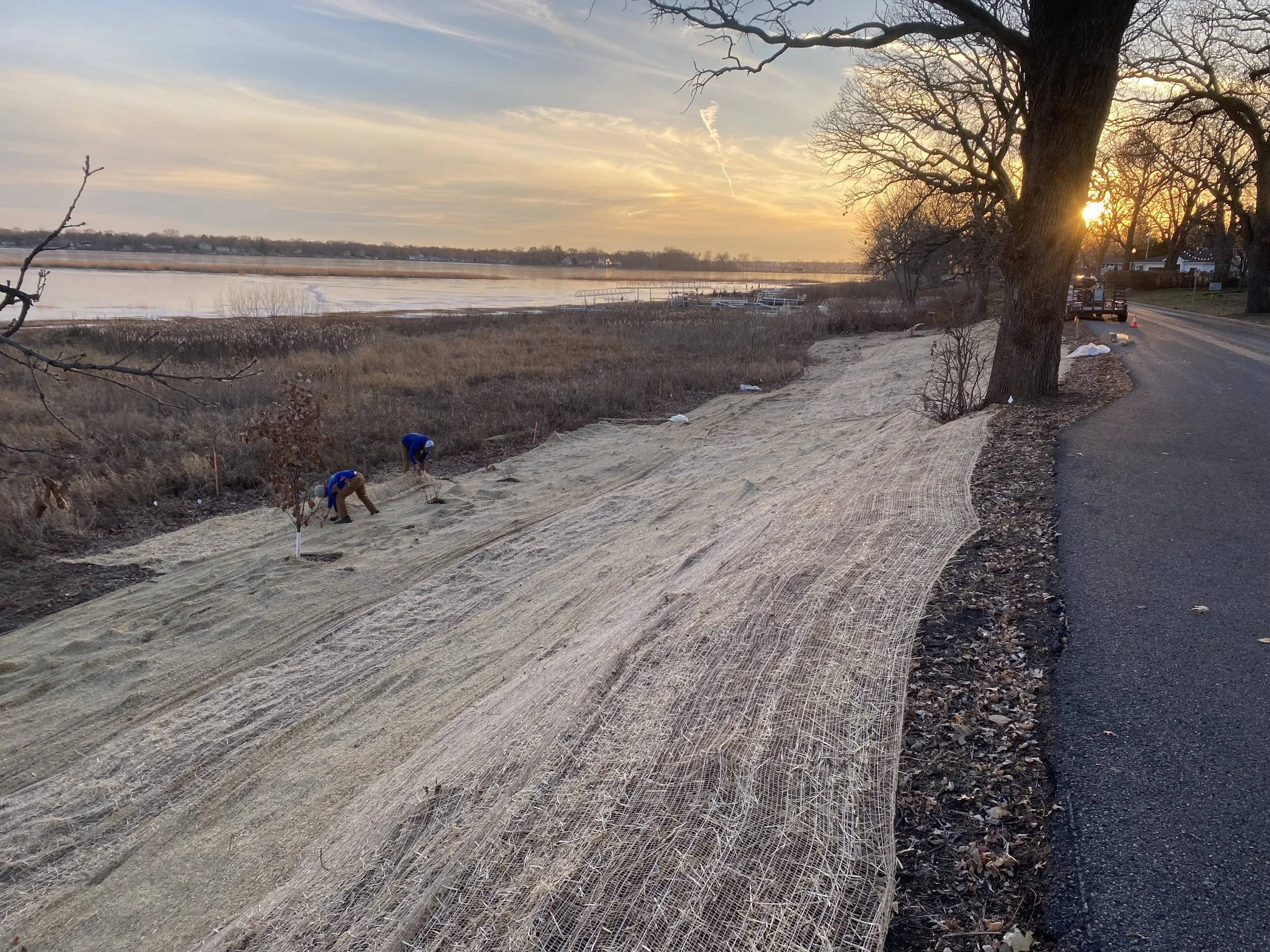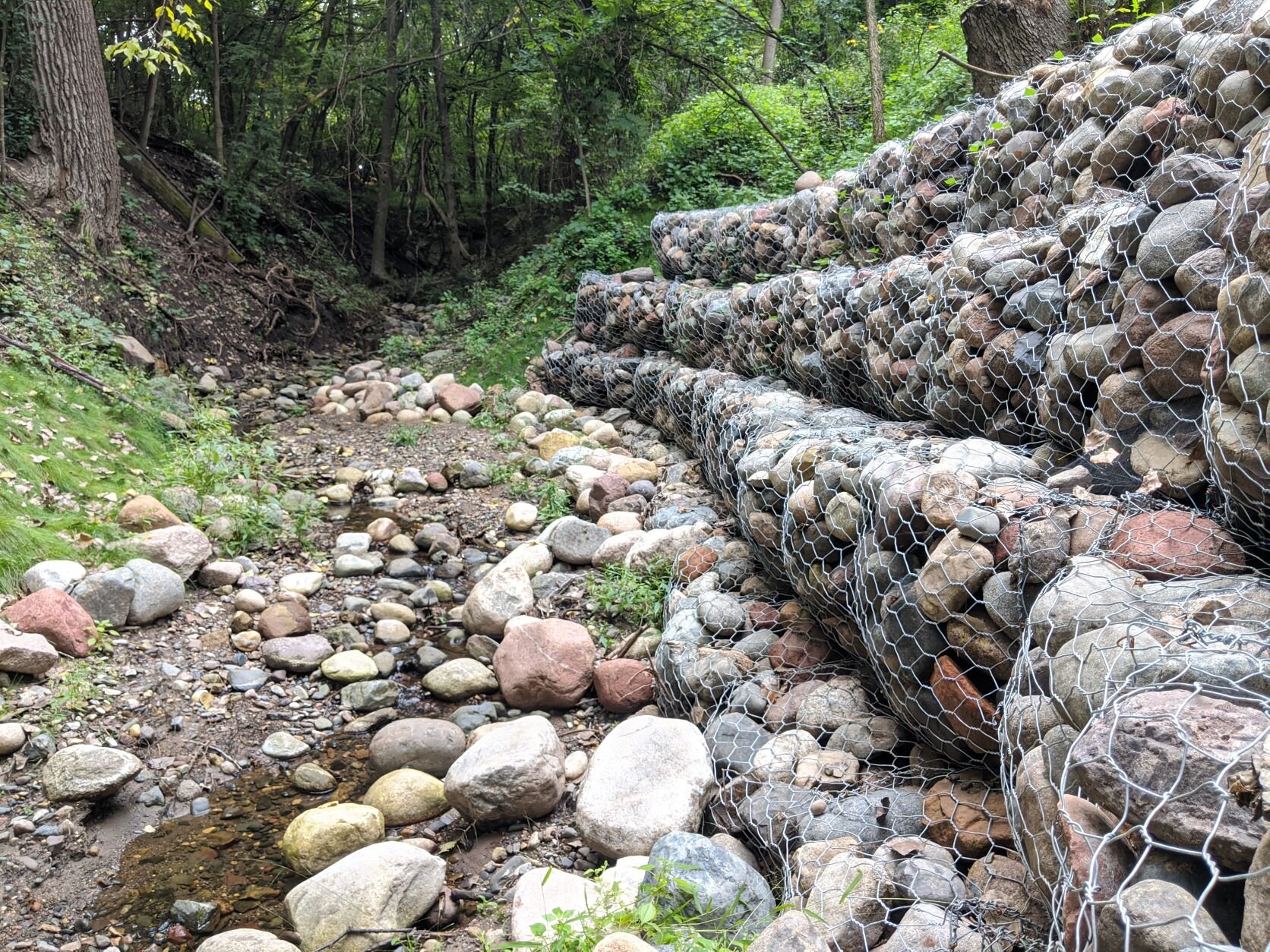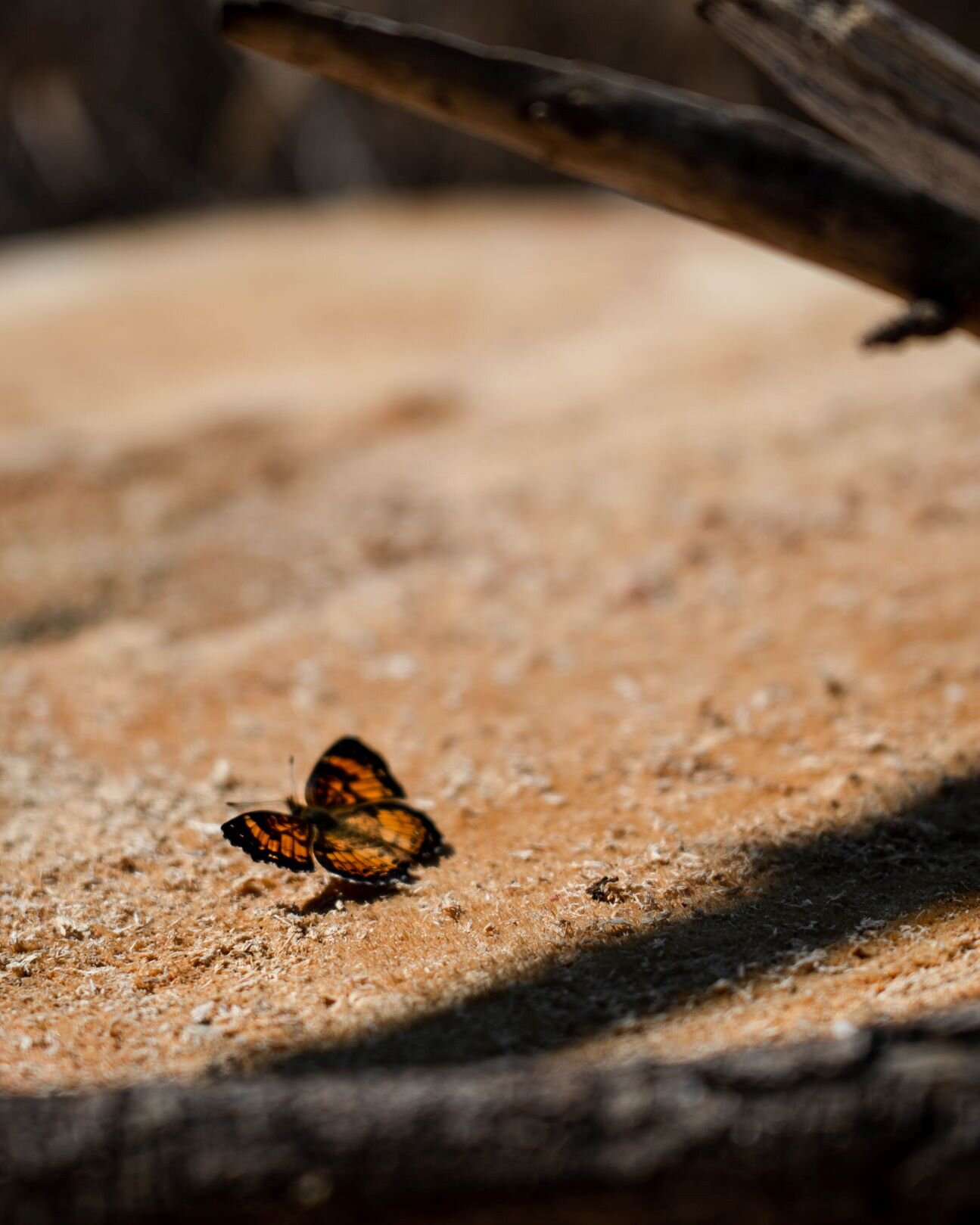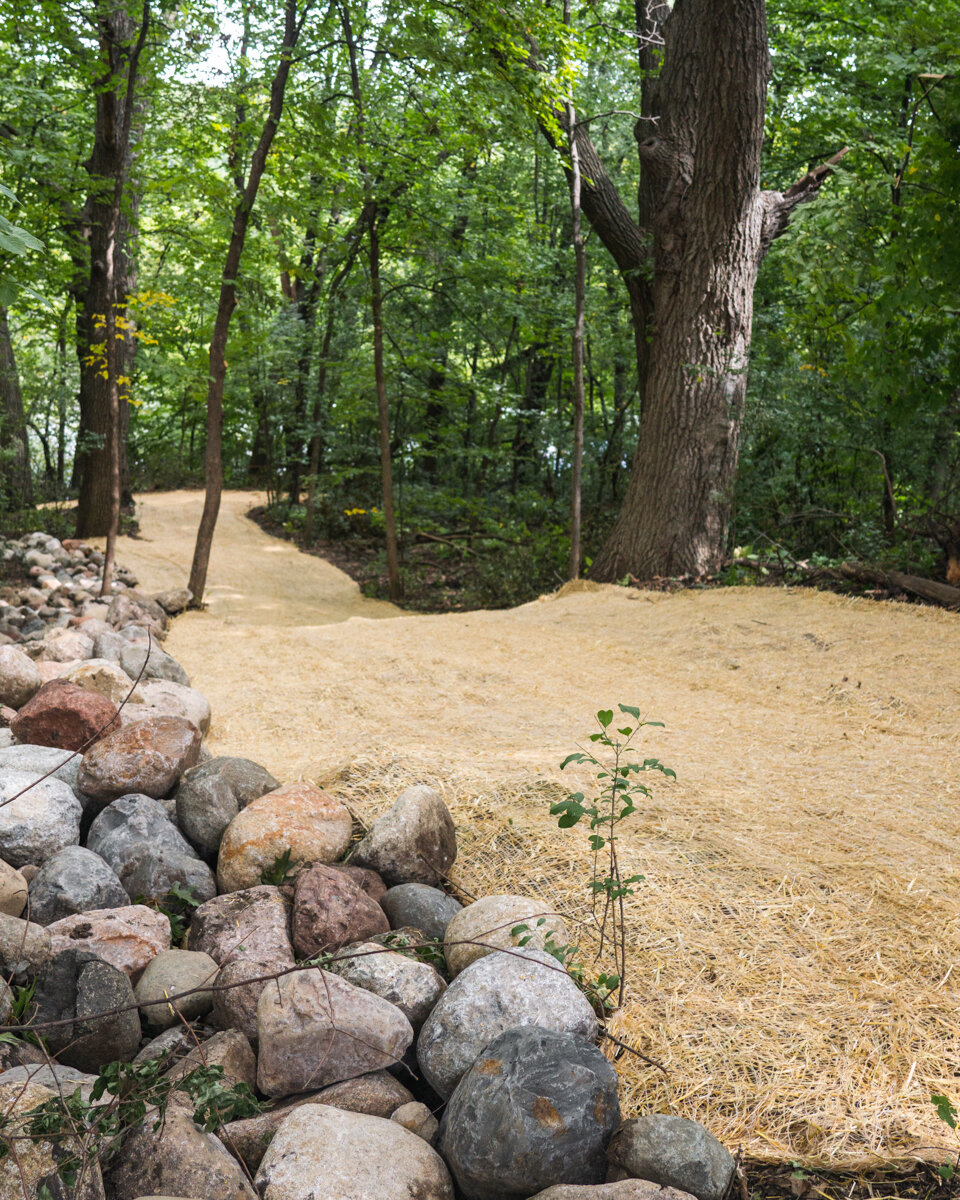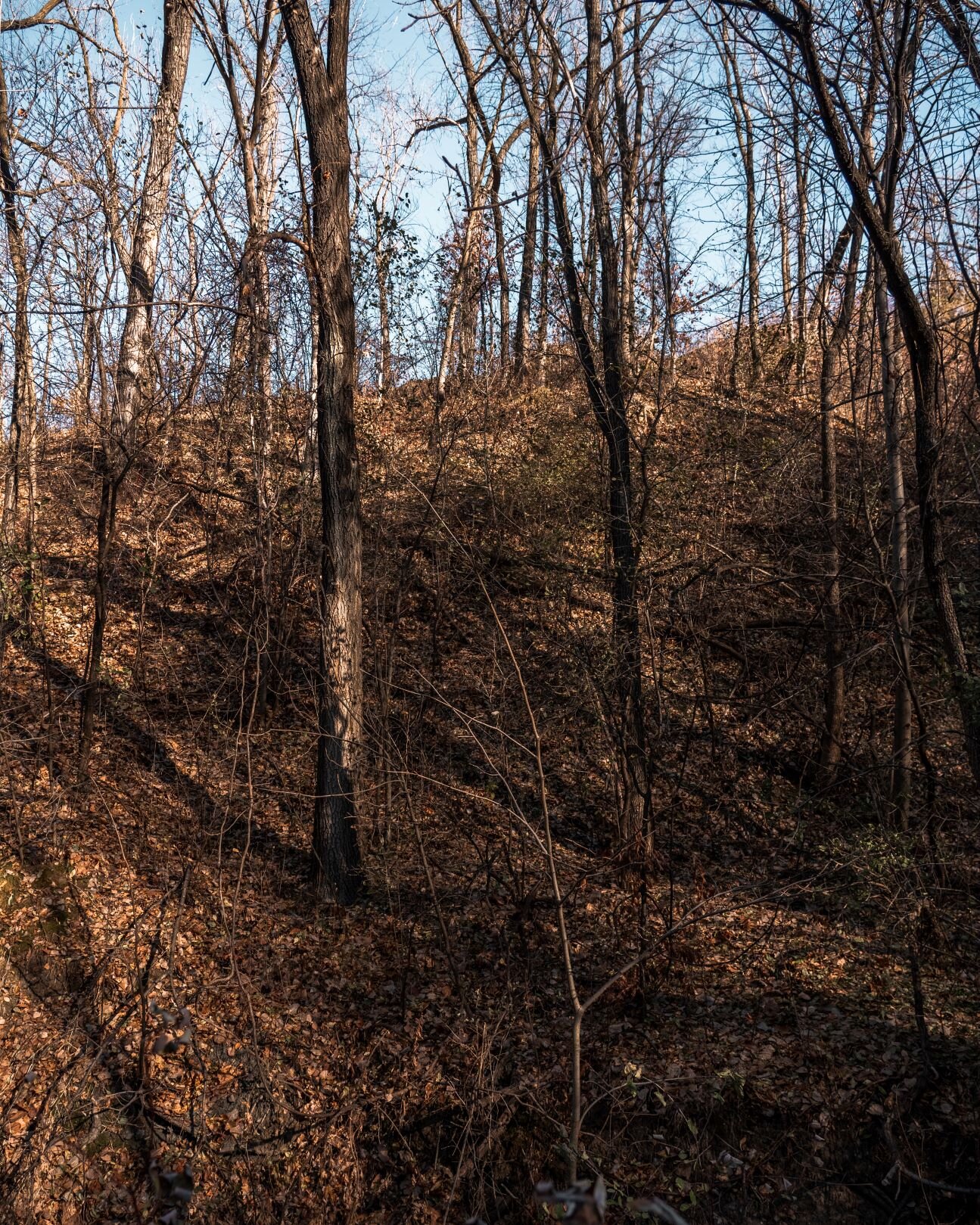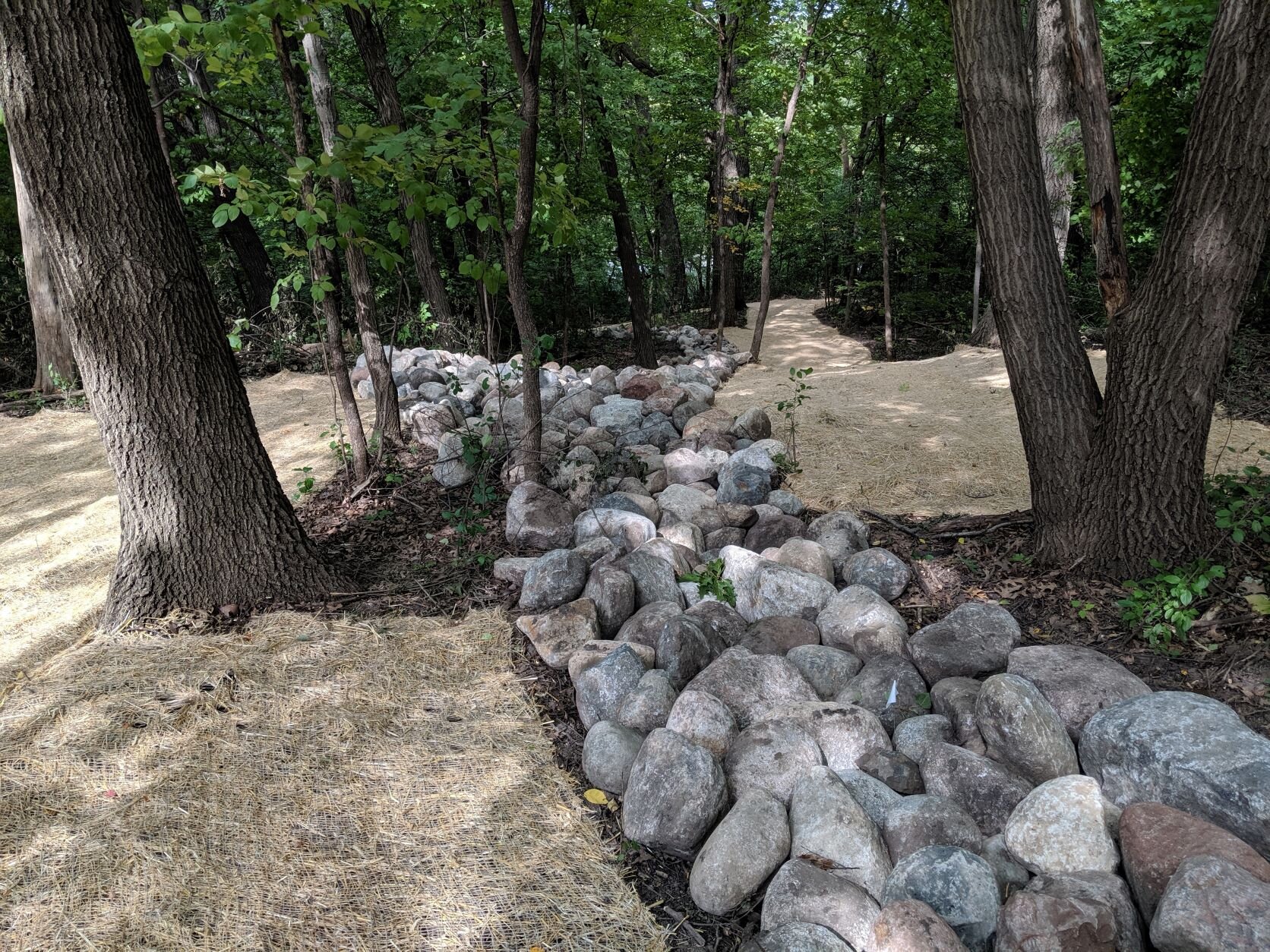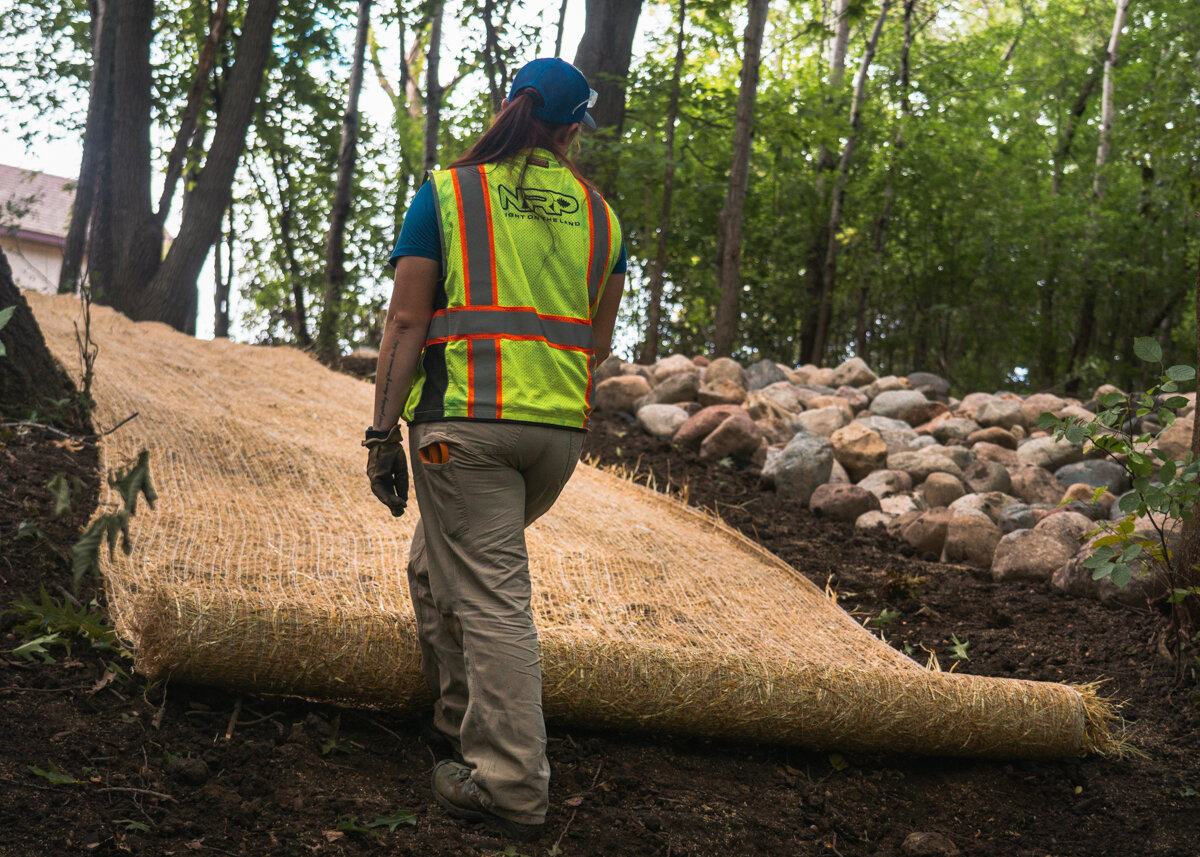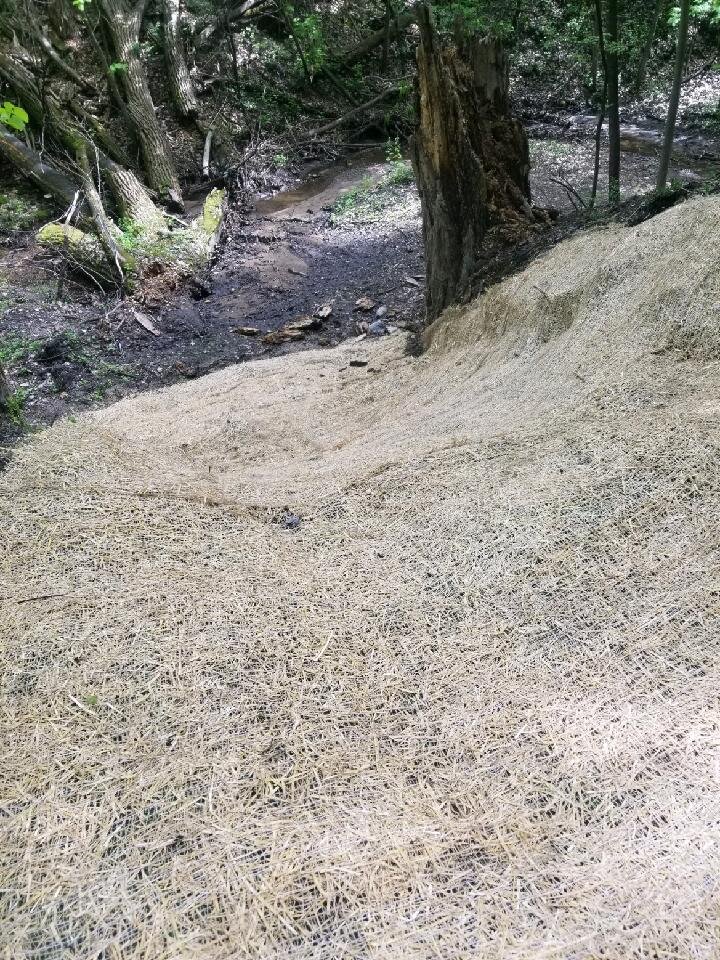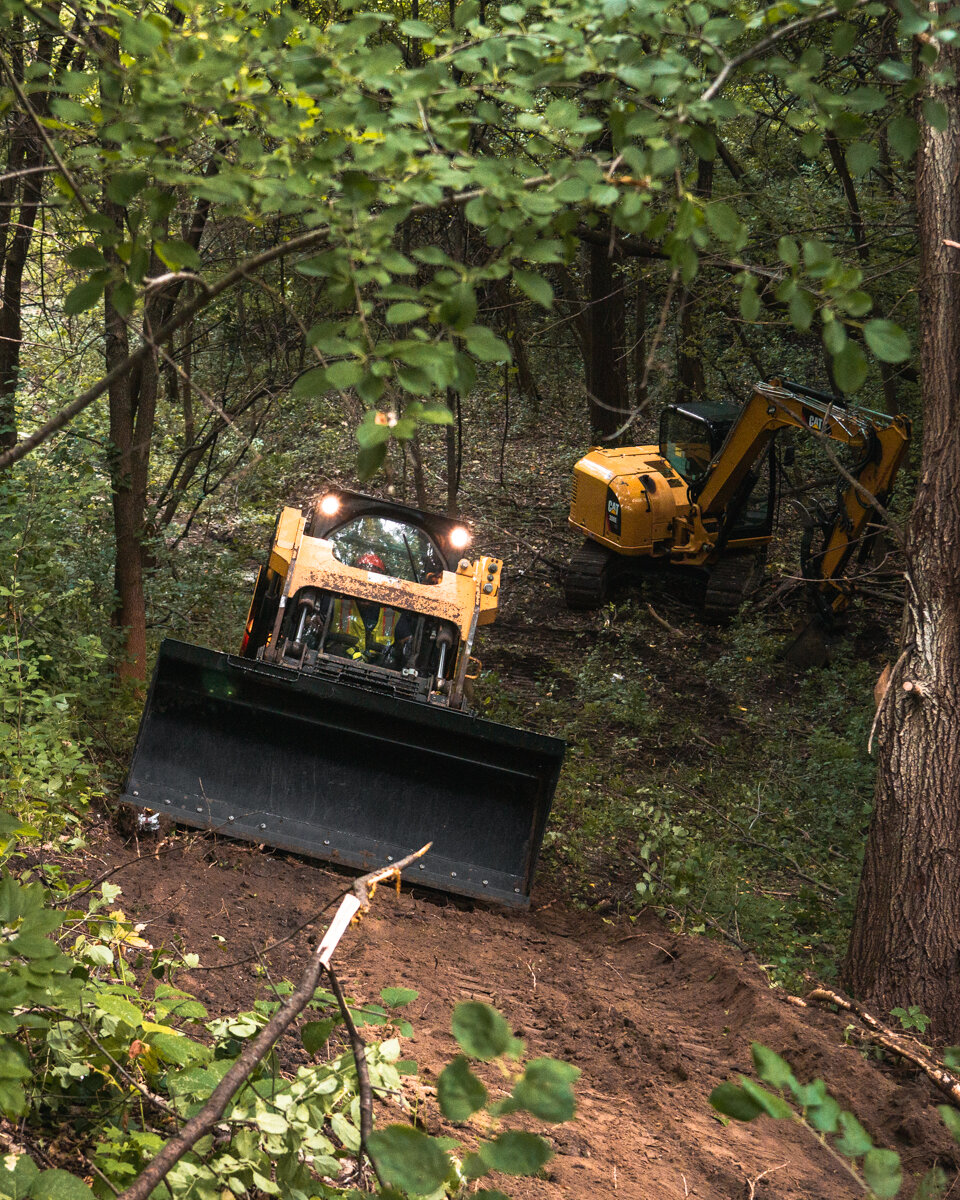Erosion Control
Soil is one of our most valuable resources . It provides the habitat for our vegetation and microbial communities, which in turn provide the base for our wildlife communities. Thriving habitats and ecosystems need healthy soils, as do our farmers, producers, and everyone who enjoys the outdoors. Unfortunately, soils are commonly threatened by erosion, especially along steep banks, waterways, and hillsides. Limiting this erosion is an important part of landscape rehabilitation, and a key component in a number of our habitat restoration projects.
Erosion control measures are a combination of natural and man-made features that work together to limit soil erosion from wind and water run-off. The man-made features are often designed to limit the causes of erosion, such as slowing down surface water or covering exposed soil to protect it from external elements. Natural features are designed to re-establish natural controls of soil erosion, such as plant communities whose roots hold the soil in place and absorb surface water.
Whatever the cause of your erosion issue, whether natural or man-made, we have a variety of erosion control solutions designed to protect soil and re-establish natural soil erosion control. Our erosion control measures take many forms to address a variety of site conditions and issues.
Slope Regrading
Using hand tools or large equipment, we can adjust slopes to natural grades to slow erosion and address water run-off issues.
Slope Stabilization
Repairing eroded slopes and stabilizing at-risk slopes may require a few plantings or a massive retaining wall. Either way, we have done it.
Cover Crops
Cover crops are quick growing species that are seeded into bare soil during agriculture, gardening, or re-seeding. Their fast-growing root structures hold soil in place while longer-growing species establish.
Bio-logs and Coir Logs
Bio-logs and coir logs are installed at the top, bottom, and centers of eroding slopes. They slow down water run-off so that it is less likely to carry soil, as well as block sediment and topsoil from running down the slope.
Native Plant Establishment
Plants are Nature’s erosion control solution. Their root structures hold soil in place while absorbing water, and their above-ground biomass slows down wind. Re-establishing native plant communities on eroded sites is key for troubleshooting erosion issues. Native prairie and woody species with long root structures and thick above-ground biomass are particularly effective, and are often used in erosion control. Native plants can be seeded, planted, or both.
Erosion Control Blankets
We use biodegradable netting of straw or coconut fiber to cover exposed soil while other erosion control solutions such as native plants are established. Blankets block erosive elements while holding topsoil in place.
Rip Rap
Riprap refers to loose stone or rock that forms a structural foundation or breakpoint. It can be lain along a slope to prevent topsoil run-off, within a channel or depression to slow water flow, along shores to act as a wave break, or combined with other construction solutions to stabilize slopes.
Stream and Shoreline Restoration
Check out our Stream and Shoreline Restoration page for specifics about what it takes to maintain healthy stream banks and shorelines.


